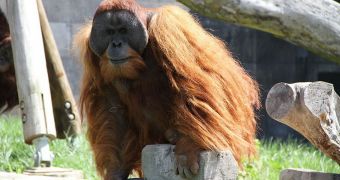Geneticists announce the successful mapping of the orangutan genome, an achievement that brings the primate within a very select group of species to have their genetic information understood in detail.
The success of this endeavor will most likely translate in the development of new tools that could find application in genetically manipulating captive orangutans. This will be done in an effort to maintain the animals' diversity, experts say.
This type of technology could be applied to both wild and captive primates, scientists believe, as their genetic codes are the same. At the same time, mapping their genomes might help us gain a better understanding of how the species evolved over time.
We could also gain new insight into how the earliest primates appeared and adapted to their new environments. The history of the earliest hominids may also become a bit clearer. At this point, some mysteries still surround our ancestors' faith.
Devin P. Locke, an expert at the Washington University Genome Center was responsible for conducting the international collaboration of researchers that carried out the mapping efforts.
Details of the new research appear in the January 27 issue of the top scientific journal Nature. The work was partially funded by the US National Science Foundation (NSF). Experts with the group say that orangutan is Malay for “man of the forest.”
At this point, the two existing orangutan populations are under tremendous stress. The one in Sumatra consists of only 7,500 individuals, and is critically endangered, whereas the one in Borneo has some 50,000 individuals, and is considered endangered.
The two orangutan species were given their respective classifications by the International Union for Conservation of Nature (IUCN), the same organization that develops the famous Red List.
According to the team that conducted the new work, the mapping effort could aid conservation efforts meant to ensure that the genetic diversity of the overall population is maintained. Inbreeding causes serious, often-deadly problems.
“The orangutan genome gives us a much more complete picture of genome evolution in the great apes,” explains Cornell University research team member Adam Siepel.
“This is a terrific example of the application of genome sequencing beyond model organisms--well-studied organism like the mouse and fruit fly,” adds NSF program director Reed Beaman.
“Research like this has only recently become possible through a dramatic decrease in the cost of sequencing. These results demonstrate broad significance to biogeography, genetics, as well as to conservation and human evolution, and they are only starting to scratch the surface,” he adds.

 14 DAY TRIAL //
14 DAY TRIAL //